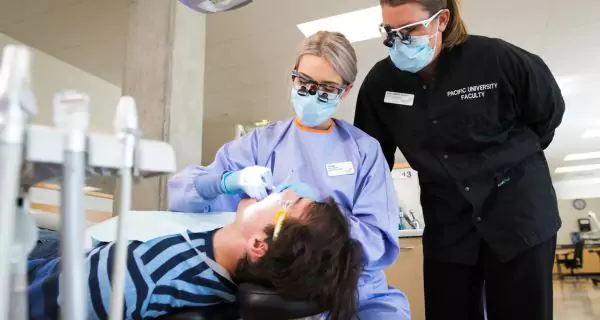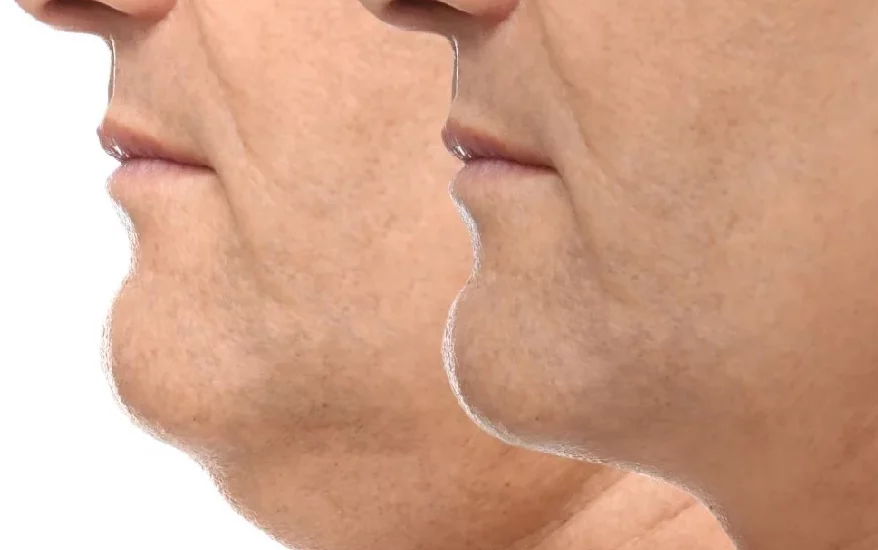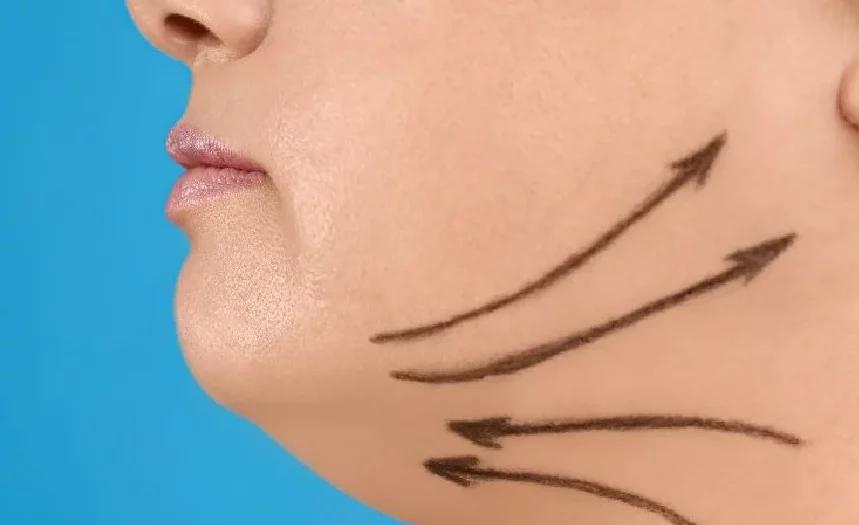Last Updated on: 19th September 2025, 12:47 pm
Double jaw surgery is a surgical procedure that corrects alterations of the jaws. Other names given to this intervention are orthognathic surgery, bimaxillary osteotomy, and bilateral maxillary surgery.
Its purpose is to improve the function, the appearance of the jaws, and the quality of life of people, in the face of diagnoses of malocclusions with a significant level of involvement in oral health or structural problems in the jaws.
In which diagnosis is it a relevant therapeutic option? What are the benefits? What risks does it imply?
Double Jaw Surgery Benefits
Maxillary orthognathic surgery provides a corrective response for different situations. Here are some of the diagnoses in which surgery is applied:
1. Affectation of the functions of the jaw: The alignment and proper size of the jaws are essential factors for different functions that take place in the mouth, such as swallowing and chewing food, and the ability to speak and breathe without problems.
2. Sleep apnea and breathing problems: When temporary breathing problems occur while sleeping, it is called obstructive sleep apnea.
3. Facial asymmetry: Facial asymmetry is a condition that is linked to the misalignment of the jaws and the correct size of these.
4. Jaw misalignment: This condition does not allow the lower and upper teeth to unite correctly, generating different effects on oral health.
5. Difference in jaw sizes: The difference in sizes between the jaws is a situation that is generally associated with misalignment.
6. Openbite: Cases in which there is a space between the upper and lower teeth when closing the mouth.
7. Problems with the temporomandibular joint (TMJ): The TMJ is the connection between the lower jaw and the skull. If there are disorders in this joint, pain in the jaw (oppression), face or ear area, jaw lock or difficulty chewing can be generated.
8. Mandibular retrognathia or prognathia: Cases in which the lower jaw is excessively small or too prominent.
In addition to the functional and aesthetic benefits, double jaw surgery improves people’s quality of life by recovering the ability to perform different daily activities, without limitations.
Who is a Candidate for double Jaw Surgery?
Having any of the diagnoses described may be a valid reason to request this surgical intervention as an alternative treatment. But – although it meets a fundamental diagnostic condition – it is not enough.
To be considered a candidate, it is necessary to meet other requirements:
• Having tried other non-surgical treatment alternatives
• Stop smoking tobacco and/or cannabis
• Understand the risks involved with this surgery
• Have skeletal maturity (18 years)
In addition, the person undergoes an assessment to determine if they are in a good general health condition that makes them fit to undertake the surgery.
The maxillofacial surgeon, specializing in maxillofacial surgery, and the orthodontist can collaborate to assess if the person meets the necessary criteria for surgery as the most appropriate option for their specific case.
Preparation for Double Jaw Surgery
To advance in the alignment of the teeth and prepare them for repositioning, 12 or 18 months before bimaxillary surgery, the health professional prescribes the use of brackets. This previous phase is known as pre-surgical orthodontics.
In the days before the intervention, a consultation with the maxillofacial surgeon and the orthodontist should be held to assess the general oral and facial health condition of the patient. A review of the general health condition of the person is also made.
In this consultation, the objectives of the surgery, the risks, and the expectations of the procedure are also discussed. In addition, indications and recommendations are given on food consumption, tobacco consumption, and some medications that may interfere with surgery.
Another aspect related to double jaw surgery that is addressed in this preparatory consultation is the recovery stage, regarding which guidelines are given regarding the diet that should be consumed in the first weeks and some care required in the first days.
The preparatory stage is fundamental for the achievement of the objectives of the intervention and recovery with less probability of adverse situations.
What is the Procedure for Double Jaw Surgery?
The first step is general anesthesia: Before the surgery begins, anesthesia is administered to ensure your comfort and to avoid any sensation of pain during the procedure.
The surgeon then makes incisions inside the mouth to access bony structures in the jaws. The incisions are internal to avoid scarring on the face.
Subsequently, the surgeon performs the corresponding procedure, according to the diagnosis that motivates the intervention. Plates, screws, or other fixation devices are used to hold the bones in their new position until they are properly fused during the healing process. Elastic bands or wires may also be added to hold the bones in their new position.
After having carried out the procedures required to solve the diagnosis, the incisions are sutured and the patient is taken to a recovery room, where he is monitored until he wakes up.
Double Jaw Surgery Recovery
After the intervention, the person remains for a few days in the health care center to monitor the evolution.
In the next 48 hours, the face will be swollen and you will be able to consume fluids before returning home, the surgeon performs a revision of the jaws and performs examinations with X-rays.
Full recovery can take anywhere from three to eight weeks. During that time you will experience pain, swelling will gradually reduce, jaw numbness, dry lip,s and stuffy nose.
To facilitate recovery it is recommended:
• Consume a bland diet for the first six weeks.
• Avoid the consumption of alcohol and tobacco.
• Avoid strenuous activity.
• Practice good oral hygiene, following the doctor’s instructions.
• Have the rest with the indications of the surgeon.
• Take prescribed medications.
• Drink plenty of water to stay hydrated.
During the first weeks, it will have weekly follow-up consultations and orthodontic adjustments will be made if necessary to continue with the post-surgical orthodontic treatment and ensure correct occlusion and dental alignment.
The initial stage of recovery takes about six weeks. Full recovery can take up to 12 weeks.
Recovery after double jaw surgery requires time, patience, and care. By following medical instructions, maintaining good oral hygiene, and attending follow-up appointments, the benefits offered by this procedure are achieved.
Risks Associated with Double Jaw Surgery
Some of the risks that this surgery entails are:
• Hearing changes
• Improper healing of incisions
• TMJ dysfunction due to adverse effects of surgery.
• Numbness of the lips, tongue, or chin.
• Infections of the incisions
• Need for a second surgery, if the expected result is not achieved.
• Adverse reaction to anesthesia
• Relapse of the jaw. Although not common, in some cases, the jaws return to their original position after surgery.
• Excessive bleeding during surgery
Double Jaw Surgery has its Opportune Moment
Double jaw surgery is applied in cases of severe malocclusions and dentofacial deformities that cannot be corrected with conventional orthodontic treatments. This surgery allows us to recover the functionality of the jaws, alleviate injuries to the temporomandibular joint and improve the quality of life.
Frequently Asked Questions
What is the level of discomfort during the recovery period after double jaw surgery?
During the recovery period after double jaw surgery, you will experience complete numbness in the operated jaw, which greatly reduces the amount of pain. Nevertheless, immediate swelling and expected jaw stiffness may cause some discomfort. Additionally, there might be soreness from the breathing tube inserted by the anesthetist, but this discomfort will gradually diminish over time.
Can I expect my smile to be different after undergoing jaw surgery?
Jaw surgery aims to improve facial symmetry and proportion, which can lead to a more harmonious overall appearance. By addressing issues such as overbites, which can greatly impact your facial aesthetics, corrective jaw surgery repositions the jaw either forward or backward, resulting in a more youthful and prominent smile.
Will my voice be affected by double jaw surgery?
When undergoing double jaw surgery, the reconfiguration and repositioning of your jaw can potentially lead to changes in your voice. It is possible to experience adjustments in speech patterns and vocal characteristics as a result of this functional surgical procedure. The altered position or shape of your jaw can have an impact on the frequencies of your voice.
Will double jaw surgery elongate your face?
A protruding lower jaw can contribute to a longer facial appearance. Double jaw surgery, on the other hand, aims to decrease the overall length and size of the face by positioning the chin further back. This procedure is particularly effective for individuals with a long midface, often referred to as a “horse face.
Share:
References
1. Cirino Erica (Noviembre 9 de 2022) What Is Double Jaw Surgery (Bimaxillary Osteotomy)? https://www.healthline.com/health/double-jaw-surgery
2. Cleveland Clinic (Noviembre 3 de 20219) Jaw Surgery (Orthognathic Surgery) https://my.clevelandclinic.org/health/treatments/22011-jaw-orthognathic-surgery
3. Mayo Clinic (June 3, 2018) Jaw Surgery https://www.mayoclinic.org/tests-procedures/jaw-surgery/about/pac-20384990
4. OMS Nashville (s. f.) What Is Double Jaw Surgery? https://omsnashville.com/blog/oral-surgery/what-is-double-jaw-surgery/
5. Ramírez Hernán, Pavic María Elsa, Vásquez Mauricio (December 2006) Orthognathic surgery: diagnosis, protocol, treatment, and complications. Analysis of clinical experience https://www.scielo.cl/scielo.php?script=sci_arttext&pid=S0718-48162006000300008
6. University of Navarra (s.f) What is orthognathic surgery? https://www.cun.es/enfermedades-tratamientos/tratamientos/cirugia-ortognatica
-
Nayibe Cubillos M. [Author]
Pharmaceutical Chemestry |Pharmaceutical Process Management | Pharmaceutical Care | Pharmaceutical Services Audit | Pharmaceutical Services Process Consulting | Content Project Manager | SEO Knowledge | Content Writer | Leadership | Scrum Master
View all posts
A healthcare writer with a solid background in pharmaceutical chemistry and a thorough understanding of Colombian regulatory processes and comprehensive sector management, she has significant experience coordinating and leading multidisciplina...




















